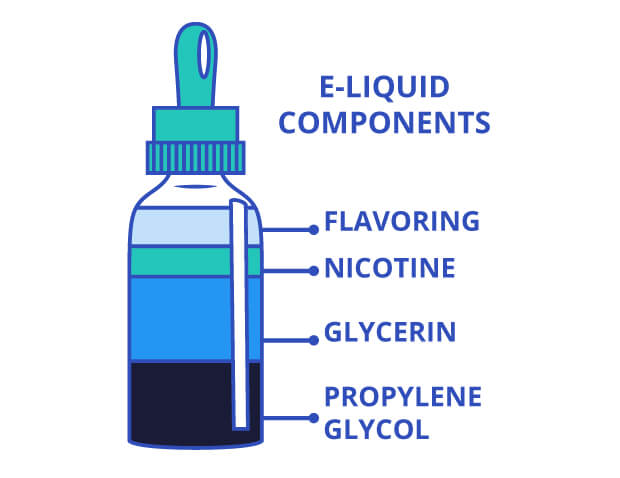WARNING: This product contains nicotine. Nicotine is an addictive chemical.
As vaping has gained popularity over the past decade, many people have questions about its potential health effects. One question that often arises is whether vapes or e-liquids have calories, and if so, what impact they may have on weight and overall health. This article explores the components of e-cigarettes and e-liquids, analyzes their caloric content, and discusses the potential implications for those who use these products.

To understand whether vapes or e-liquids have calories, it is essential first to learn about the components of e-cigarettes and the ingredients found in e-liquids.
E-cigarettes, or vapes, are electronic devices that heat a liquid, known as vape juice or e-liquid, to produce an aerosol that users inhale. The main components of e-cigarettes include:

E-liquids typically contain four main ingredients:
Given the ingredients found in e-liquids, it is essential to examine their potential caloric content and how it may affect those who vape.
Both propylene glycol and vegetable glycerin have caloric content. PG contains approximately 4.1 calories per gram, while VG has about 4.3 calories per gram. However, it is crucial to understand that when e-liquids are vaporized and inhaled, the vast majority of these calories are not actually consumed. The lungs’ primary function is gas exchange, not nutrient absorption. While a small amount of PG and VG may be absorbed into the bloodstream, the majority of the vapor is exhaled. This means that the actual caloric intake from vaping is negligible.
Nicotine itself does not have any caloric content. However, it is a stimulant and can increase metabolism, which could potentially affect weight and overall health. It is essential to note that the health risks associated with nicotine, such as addiction and cardiovascular effects, far outweigh any potential benefits from its metabolism-boosting properties.
The flavorings used in e-liquids are typically food-grade and considered safe for consumption. However, their caloric content is minimal, and like PG and VG, most of the flavorings are not absorbed by the lungs when vaporized. Therefore, the caloric impact of flavorings in e-liquids is considered negligible.
While there is some caloric content in the ingredients of e-liquids, it is essential to understand how this compares to traditional food intake and the potential impact on weight and health.
The primary difference between vaping and consuming food lies in the method of intake and the body’s ability to absorb nutrients. Food is ingested and broken down in the digestive system, where calories and other nutrients are absorbed into the bloodstream. In contrast, the lungs absorb only a minimal amount of the components in e-liquids, and the majority of the vapor is exhaled. Considering the minimal absorption of calories from vaping, the typical caloric intake from vaping is far less than that of eating or drinking. For example, a person might consume hundreds of calories from a single meal, while the calories absorbed from vaping would likely be in the single digits, if not lower.
Given the negligible caloric intake from vaping, it is unlikely that using e-cigarettes would significantly impact a person’s body weight. However, it is essential to consider the broader health implications of vaping. While e-cigarettes are often promoted as a safer alternative to smoking traditional cigarettes, they are not without risk. The long-term health effects of vaping are still being studied, but research has shown that e-cigarettes can cause inflammation in the lungs, increase the risk of respiratory infections, and may contribute to heart disease. Additionally, nicotine addiction remains a significant concern for those who use e-cigarettes. It is essential for individuals to weigh the potential risks and benefits of vaping, particularly if they are considering using e-cigarettes as a weight management tool. Overall, the caloric intake from vaping is minimal, and its impact on weight is likely negligible. However, the health risks associated with vaping should not be overlooked.
In summary, while e-liquids do contain some calories due to the presence of propylene glycol, vegetable glycerin, and flavorings, the actual caloric intake from vaping is minimal. The majority of the vapor is exhaled rather than absorbed by the lungs, making the impact on weight and overall health negligible in terms of caloric content.
If you want to know more, please refer to this article:
https://keystonevape.com/best-vape/the-best-disposable-vapes-2024-you-cant-miss/
